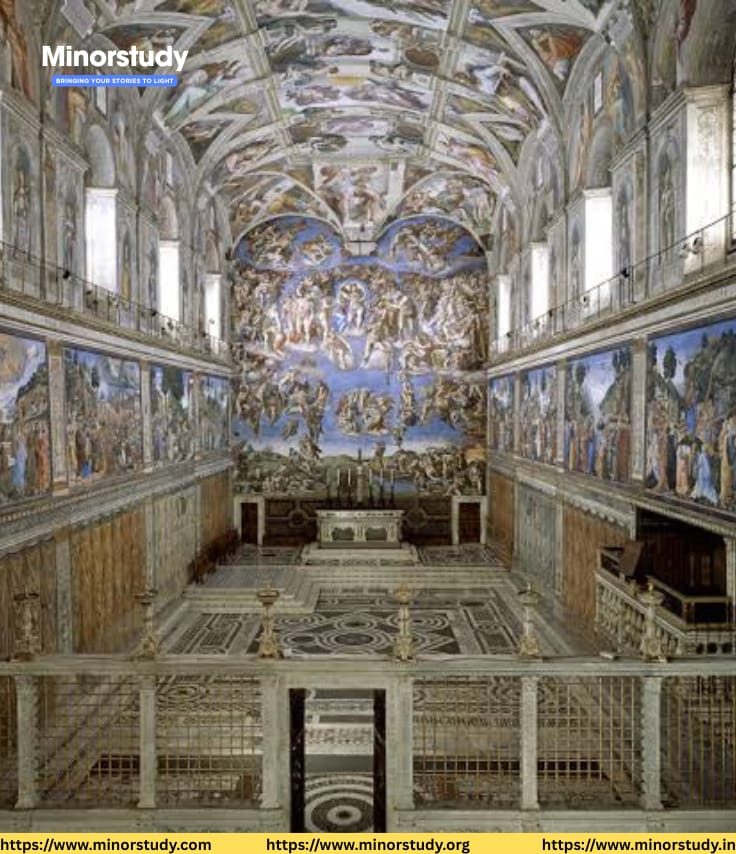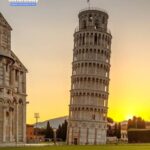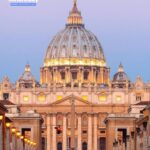11 Stunning Facts About the Sistine Chapel That Will Leave You Speechless
Nestled in the heart of Vatican City, the Sistine Chapel is far more than just a religious structure—it’s a living canvas of divine art, political power, spiritual reverence, and human achievement. Every inch of this chapel speaks volumes about the intersection of art, faith, and history, captivating millions from all walks of life.
- 🏰 What Is the Sistine Chapel?
- 📖 History of the Sistine Chapel
- 🗓️ Timeline of Key Events
- 🧠 11 Stunning Facts About the Sistine Chapel
- ❓ Frequently Asked Questions (FAQs)
- Q1: Can you take photos inside the Sistine Chapel?
- Q2: How long did it take to complete the Sistine Chapel?
- Q3: Why is the Sistine Chapel so important?
- Q4: What is depicted on the ceiling?
- Q5: Is it part of the Vatican Museums?
- ✨ Significance of the Sistine Chapel
- 💐 Wishing & Observance
- 📌 Important Points to Remember
- 💡 Importance in Our Life and Society
- ✅ Conclusion: A Ceiling That Raised the World
- 📣 Final Thought
From Michelangelo’s awe-inspiring frescoes to its role in papal conclaves, the Sistine Chapel is not only sacred ground but also an enduring symbol of the Renaissance and human creative genius. In this heartfelt guide, we journey through its fascinating history, key facts, timelines, cultural impact, and more—all told in a way that reflects our shared human admiration.
🏰 What Is the Sistine Chapel?
The Sistine Chapel is a papal chapel in the Apostolic Palace, the official residence of the Pope. While it serves many liturgical functions, it is most famous for its ceiling painted by Michelangelo, including the legendary Creation of Adam.
It’s the venue where the College of Cardinals gathers to elect a new pope and remains a powerful testament to the spiritual and artistic heartbeat of the Catholic Church.
📖 History of the Sistine Chapel
The Sistine Chapel was named after Pope Sixtus IV, who commissioned its construction.
🔹 Construction & Early Design
Commissioned: 1473 by Pope Sixtus IV
Architect: Giovanni dei Dolci
Completed: 1481
Original Purpose: Chapel for papal services and court ceremonies
The original frescoes on the walls were painted by early Renaissance masters like Botticelli, Ghirlandaio, and Perugino, focusing on stories from the life of Moses and Jesus.
🔹 Michelangelo’s Transformation
In 1508, under Pope Julius II, Michelangelo was commissioned to paint the chapel’s ceiling, a task he reluctantly accepted.
Ceiling Frescoes Painted: 1508–1512
The Last Judgment (Altar Wall): 1536–1541 (under Pope Paul III)
What resulted was nothing short of miraculous—over 5,000 square feet of symbolic, spiritual, and anatomical brilliance.
🗓️ Timeline of Key Events
| Year | Event |
|---|---|
| 1473 | Commissioned by Pope Sixtus IV |
| 1481–1482 | Wall frescoes completed by Renaissance artists |
| 1483 | Officially consecrated |
| 1508–1512 | Michelangelo paints the ceiling |
| 1536–1541 | Michelangelo paints The Last Judgment |
| 1980–1994 | Major restoration project |
| Present | Hosts daily Masses, Papal events, and Papal elections |
🧠 11 Stunning Facts About the Sistine Chapel
It’s Bigger Than You Think
The chapel measures 40.9 meters long, 13.4 meters wide, and 20.7 meters high—similar in size to Solomon’s Temple in the Old Testament.The Ceiling Contains Over 300 Figures
Michelangelo’s ceiling frescoes feature prophets, sibyls, ancestors of Christ, and scenes from Genesis.It Took Just 4 Years to Paint
Despite its complexity, Michelangelo painted the ceiling between 1508 and 1512—entirely lying on scaffolding above.Michelangelo Wasn’t a Painter
Trained as a sculptor, he initially resisted the job, calling himself unqualified.He Painted the Ceiling Alone
Contrary to belief, Michelangelo didn’t have a large team; he mostly worked solo.It Survived World Wars
Though located in the center of turbulent Europe, the chapel remained untouched by WWI and WWII destruction.The Last Judgment Was Controversial
Critics accused Michelangelo of heresy for the nudity in the fresco. Later, fig leaves and drapery were added.It Was Restored With Japanese Help
A major restoration project (1980–1994) was sponsored by Nippon Television Network Corporation of Japan.It Inspired Countless Artists
From Raphael to Salvador Dalí, the Sistine Chapel has influenced art movements across centuries.It Hosts Papal Conclaves
The Sistine Chapel is where Popes are elected under strict secrecy, with smoke signals announcing results.Millions Visit Annually
Over 6 million visitors come to the Vatican Museums each year—most eager to stand beneath Michelangelo’s masterpiece.
❓ Frequently Asked Questions (FAQs)
Q1: Can you take photos inside the Sistine Chapel?
A: No. Photography is strictly prohibited to protect the frescoes and respect the sacred space.
Q2: How long did it take to complete the Sistine Chapel?
A: The building was completed in about 8 years (1473–1481), but the ceiling alone took Michelangelo 4 years.
Q3: Why is the Sistine Chapel so important?
A: It serves both artistic and religious purposes—a masterpiece of the Renaissance and a holy site for major Catholic events.
Q4: What is depicted on the ceiling?
A: The ceiling includes scenes from Genesis, prophets, sibyls, and the Creation of Adam, perhaps the world’s most iconic fresco.
Q5: Is it part of the Vatican Museums?
A: Yes. It’s located within the Vatican Museums, accessible via ticketed entry.
✨ Significance of the Sistine Chapel
🖼️ Artistic Renaissance
It represents the pinnacle of Renaissance art, combining theology, human anatomy, and symbolism in a single work.
🕊️ Religious Importance
As the venue for Papal conclaves, it’s at the heart of Catholic Church governance and spiritual heritage.
🌍 Cultural Impact
Its art has appeared in textbooks, films, advertisements, pop culture, and inspired generations of thinkers.
🔬 Scientific & Anatomical Insight
Michelangelo’s deep anatomical knowledge—visible in his muscular depictions—bridged science and spirituality.
💐 Wishing & Observance
Here’s a heartfelt wish for anyone touched by the beauty of art, faith, or human perseverance:
“May your heart be uplifted by the same divine spirit that guided Michelangelo’s hand in the Sistine Chapel. Let inspiration find you—even on your back, painting the skies.”
✨ Observance Dates:
Feast of Saints Peter and Paul (June 29) – Vatican celebration
Easter and Christmas Masses – Often held in or near the chapel
Anniversaries of Michelangelo’s works – Observed by art historians globally
📌 Important Points to Remember
Entry via Vatican Museums – Book online to avoid long queues.
Dress Code – Modest clothing is required; no sleeveless tops or short shorts.
Quiet Space – Silence is requested inside, as it’s a place of reverence.
No Phones, No Flash – Respect preservation rules.
💡 Importance in Our Life and Society
🧬 In Daily Life:
For Pilgrims: A sacred site connecting worshippers to divine inspiration.
For Artists: A living classroom of form, structure, and meaning.
For Scholars: An emblem of intellectual, artistic, and theological synergy.
💞 Societal Impact:
Tourism & Economy: A vital driver of Vatican City and Rome’s global tourism economy.
Cross-cultural Influence: Revered by Christians, artists, historians, and secular admirers alike.
Symbol of Unity: Brings together art and faith, showing that beauty can be both sacred and universal.
✅ Conclusion: A Ceiling That Raised the World
The Sistine Chapel is not just a ceiling or a chapel—it is the canvas of our collective spiritual and creative aspirations. From a reluctant sculptor’s brush to divine inspiration immortalized in plaster, it proves that human potential knows no ceiling.
It continues to draw millions of souls, inviting each to gaze upward—not just with their eyes, but with their hearts.
📣 Final Thought
“In the quiet hush of the Sistine Chapel, one doesn’t just witness art—you hear the whisper of heaven through color and form.”








